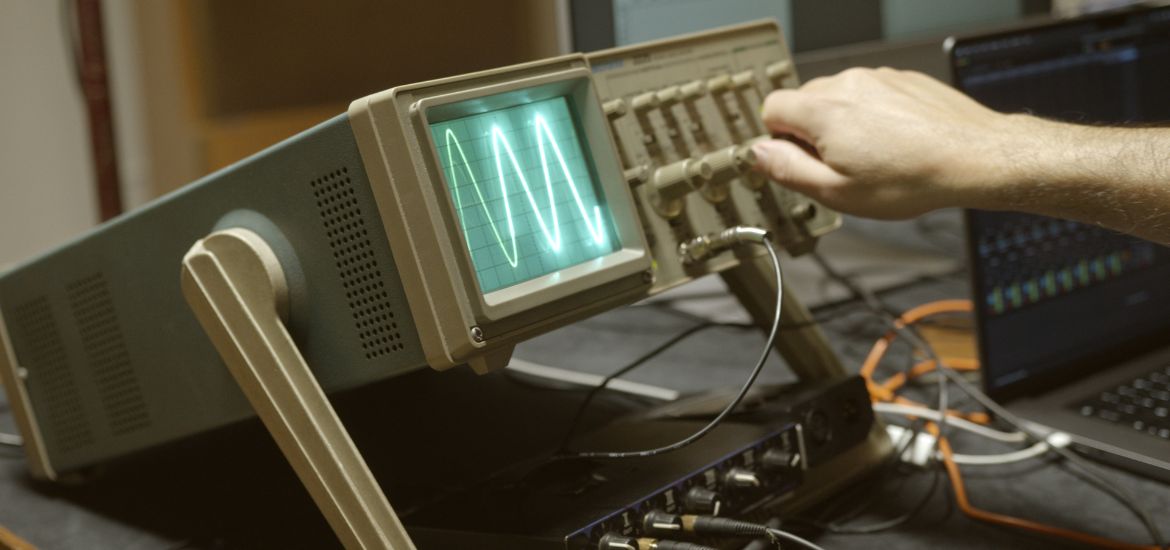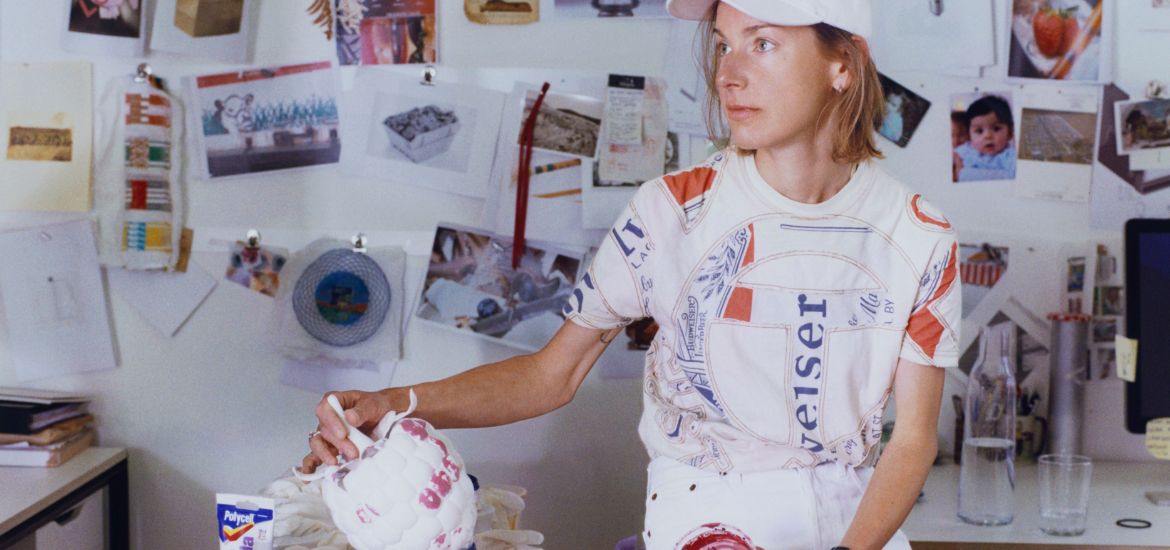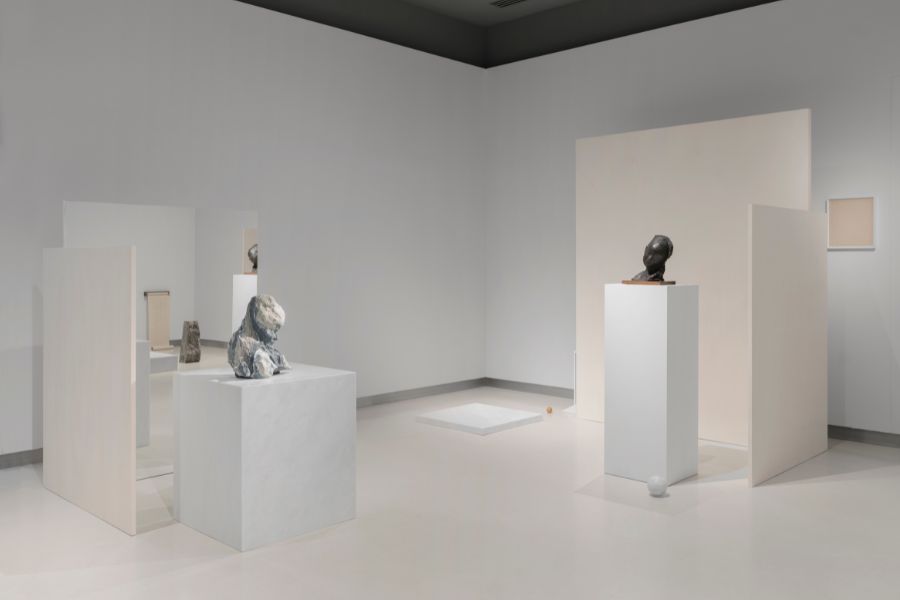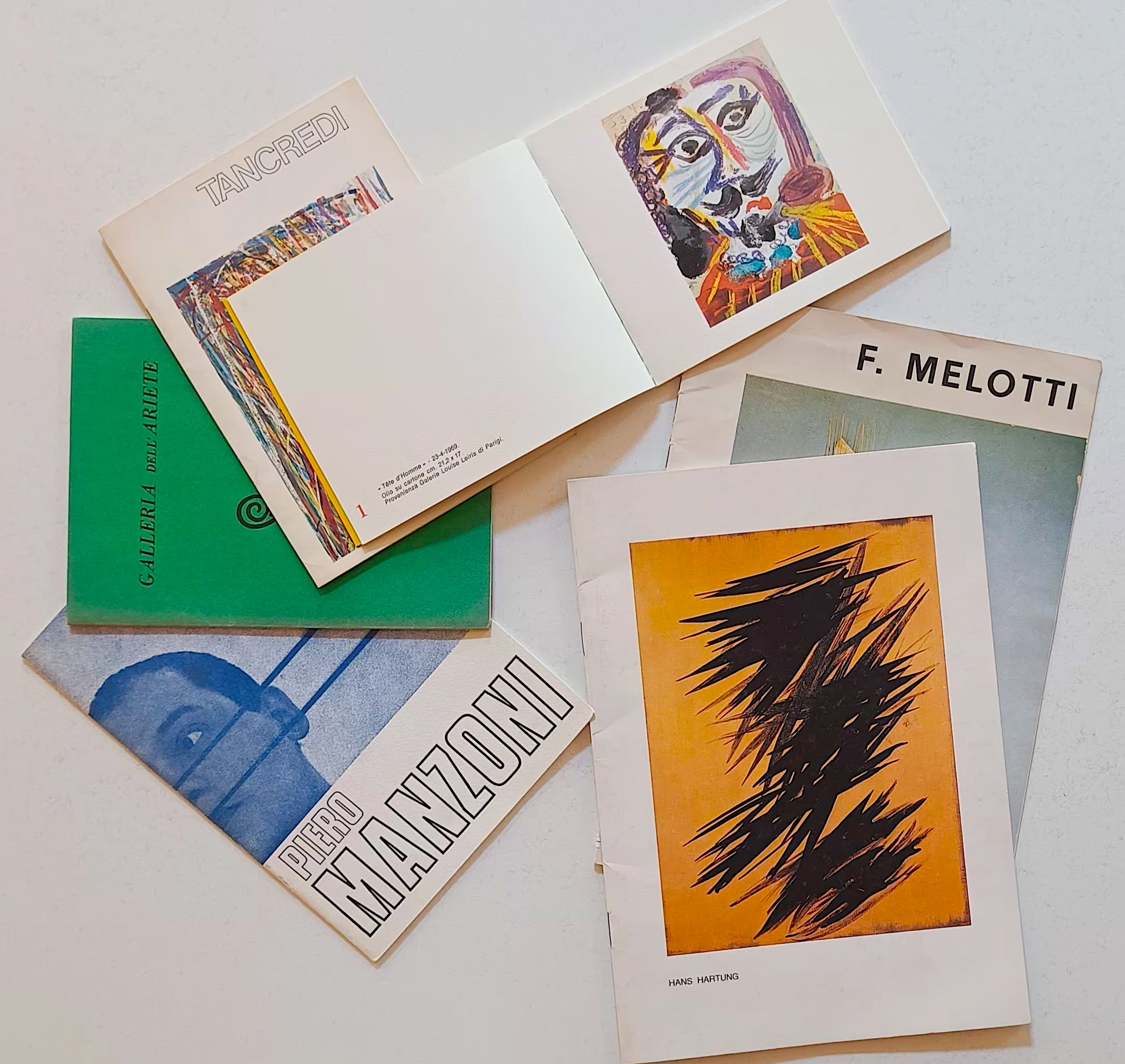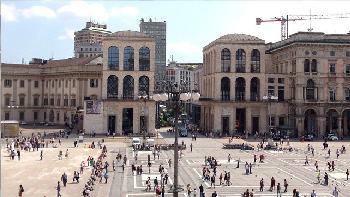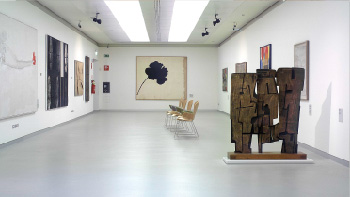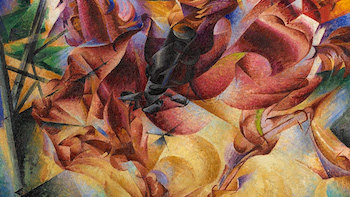MARIO NIGRO
Opere 1947-1992
The most extensive overview ever put on of the works of Mario Nigro (Pistoia 1917-1992 Livorno), one of the great exponents of twentieth-century Italian art is open to the public at two venues: Museo del Novecento (until 5 November 2023) and Palazzo Reale (until 17 September 2023).
Promoted by the City of Milan - Culture, produced by the Palazzo Reale, Museo del Novecento and Eight Art Project, the project has been created in collaboration with the Archivio Mario Nigro and is curated by Antonella Soldaini and Elena Tettamanti.
Over a hundred and forty works by Nigro, dating from 1947 to his last one in 1992, are on show, with paintings, three-dimensional items, works on paper and a vast selection of documents. The exhibition includes works that were shown at the Venice Biennales of 1964, 1968, 1978, 1982, 1986 and at the 10th Quadriennale in Rome in 1973.
The exhibition marks the different moments in Nigro's artistic language: from an experimental attitude in the 1940s to a decisive orientation towards abstract and geometric compositional structures. The artist's works suggest a recurring narrative horizon based on 'rhythm', 'forms' and 'time', the result of a vision in which musical and scientific knowledge have a decisive influence.
A conference organised in collaboration with the Padiglione d’Arte Contemporanea (PAC) recalled the terrorist-mafia attack of 27 July 1993, which destroyed both the premises of the pavilion and a work by Mario Nigro. The bomb also damaged other works by him, which were to have been shown in an anthological exhibition devoted to him a year after he passed away. The idea of the conference came from a reflection on this tragic attack – which struck both Milan and Italy thirty years ago this year – as the most appropriate way to assert the primacy of art and culture over crime.
Museo del Novecento
In the Spazio Archivi of the Museo del Novecento, visitors will be able to examine Nigro’s works on paper as well as a vast selection of documents. Some of these, which come from the Archivio Mario Nigro, have never been exhibited before. These include notes, letters, brochures, catalogues and invitations, texts by the artist concerning the “total space” series, as well as shots by photographers including Aurelio Amendola, Nataly Maier, Maria Mulas and Ugo Mulas. Works on paper became a key feature of Mario Nigro’s diverse approach, and can be considered as a testing ground for his artistic ideas, an incubator of thoughts and a workshop for the creation of images. The sequence of works on paper, which are conceptually linked to those in the exhibition at the Palazzo Reale, makes it possible to follow the various pictorial cycles that were a prime feature of his work. In particular, we see examples of the “chequered panels” series and precious drawings, which ultimately led to his “total space” series, all of which were conceived in the 1950s. The works made with tempera, pastel and watercolour on canvas-backed paper paved the way for a number of series: “total time”, which he started in the mid-1960s, and the “earthquakes”, of 1980-81, through to the “horizons” and “tracks” of the 1980s, and the “meditations” and “structures” of the 1990s. These enabled him to achieve considerable dimensions, while remaining within the scope of works on paper.
Palazzo Reale
The display illustrates the artist’s various stylistic periods. It unfolds through eight galleries on the piano nobile of Palazzo Reale, retracing Nigro’s activity with paintings and three- dimensional works, which he made from the second half of the 1940s. The works bear witness to his experimental approach to art and his decisive orientation towards abstract and geometric compositional structures. The earliest works, which already point to a thematic vision influenced by the concepts of “rhythm”, “forms” and “space” – which regularly return in Nigro’s artistic research – are the result of his scientific studies and his knowledge of musical compositional structures. From these, we are taken through to the most original cycle of “total space”, in which, from 1952 onwards, he felt the need to go beyond purely formal matters and make way for more expressly existential themes. Between 1962 and 1964 came a new perceptive dynamic, in the form of collage, which attenuated the grid structure that had been such a feature of his work until then. His new series of “vibratile collages” were presented at the 32nd Venice Biennale in 1964, to which he was invited by Lucio Fontana. In the mid-1960s, Nigro started combining chromatic freedom with the need to obtain a greater degree of geometric structuring, thus establishing a lively dialogue with the architectural setting. An example of his environmental works is "Dallo spazio totale: componibile in 7 pezzi in contrasto simultaneo di progressioni ritmiche", 1965, which is of particular symbolic value in his career, for it is similar to "Dallo spazio totale Totem, 1954-1956", 1965, which was destroyed during the terrorist-mafia attack of 27 July 1993 at PAC in Milan. Nigro’s “total time” series saw his pictorial activity develop from 1966 to 1979 with the line now taking centre stage in his visual language. A prime feature of the works that the artist himself referred to as “fixed structures with a chromatic licence” is the dialogue they create between the “colour-sign” and the monochromatic background, while also dealing with the theme of love, experienced both as a sexual impulse and as a romantic desire. The late 1970s brought works with metaphysical overtones, in which a single line asymmetrically divides the panels in which the background is characterised by a colour in shades of green, lilac, light/dark blue, or red, as in "Dalla metafisica del colore: i concetti strutturali elementari geometrici, Ettore e Andromaca", 1978, which was shown at the Venice Biennale that year. The absolute centrality of the line continues in the new investigation that appears in the “earthquakes” and “horizons” series. In the latter, the line does not reach all the way to the edges of the canvas, but stops earlier, conveying a powerful sense of solitude. Having abandoned his previously precise and rigorous logic, his painting becomes increasingly introspective and ultimately segments the line into its most indivisible unit, the dot. From 1987 until 1992, the year of his death, his series followed on one after the other. These range from his “portraits”, based on his ideas concerning the action of painting, to his “satanic paintings”, in which the brushstroke appears as a solid column that almost completely fills the field and in which colour becomes more dramatic. In the closing years of his life, he returned to a lighter palette in his “structures”, which he made between 1990 and 1992. The exhibition includes two of these: 6 strutture, 1991 and his very last work, 25 strutture, 1992.
The catalogue, published by Silvana Editoriale, contains an essay by Antonella Soldaini, an interview with Tommaso Trini by Elena Tettamanti on the work and personality of Mario Nigro, an essay by Francesca Pola devoted to his works on paper, a detailed chronology and an updated bio-bibliographic section.

